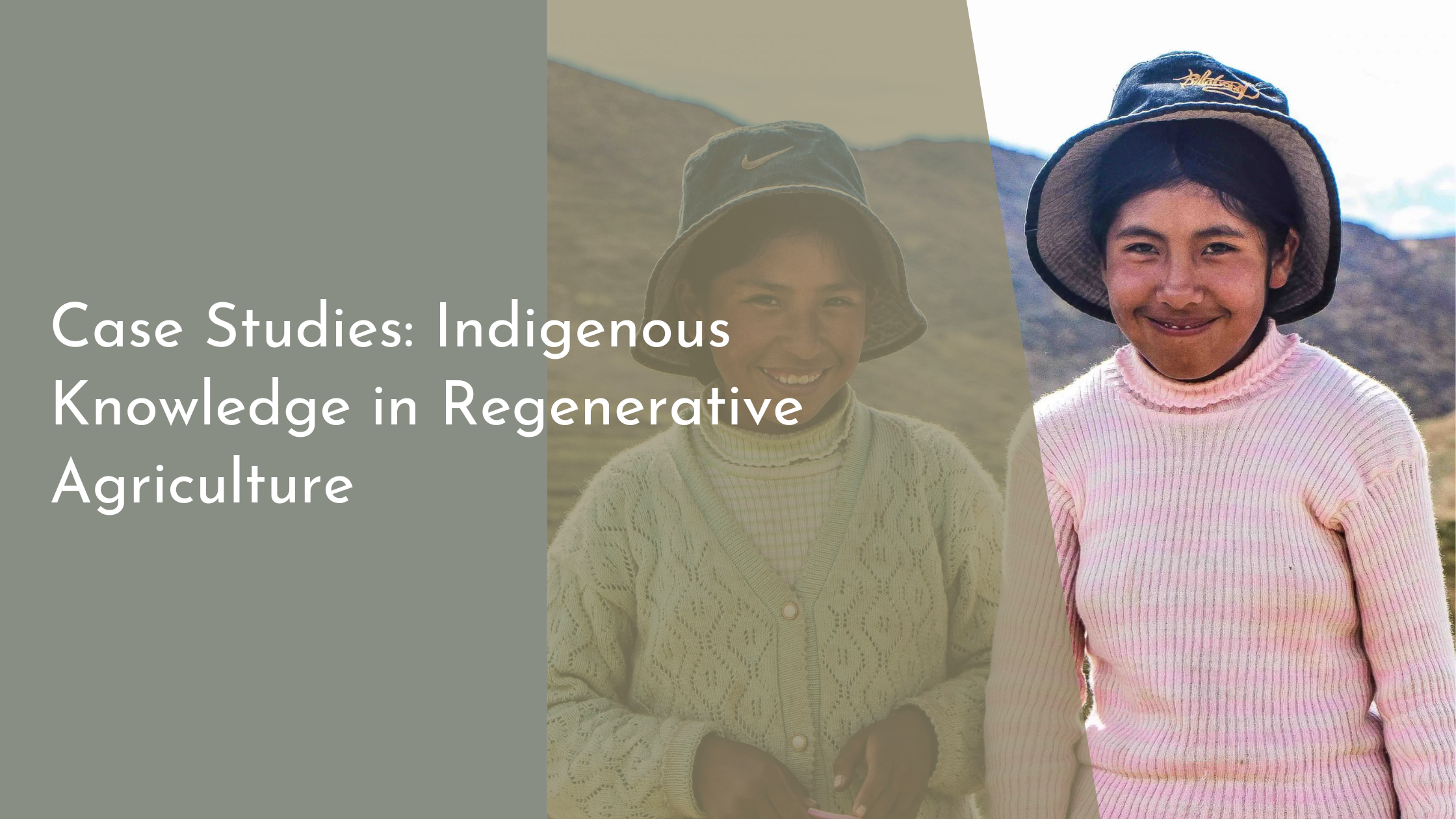Case Studies: Indigenous Knowledge in Regenerative Agriculture
In the face of environmental challenges and the urgent need for sustainable practices, regenerative agriculture has emerged as a beacon of hope. At its core, regenerative agriculture seeks to restore and enhance ecosystems, drawing upon holistic farming and land management techniques. Among the most profound sources of inspiration for regenerative agriculture are the practices and wisdom of Indigenous communities. These communities have long nurtured a deep connection with the land, developing methods that promote environmental health and resilience. This article explores the invaluable contribution of Indigenous knowledge to regenerative agriculture through case studies and success stories, illuminating a hopeful path forward.
Exploring Indigenous Wisdom in Agriculture
Indigenous knowledge systems are a treasure trove of agricultural wisdom, honed over thousands of years through close observation and interaction with the natural world. These systems often emphasize the interconnectedness of all life forms, promoting a balance that modern agricultural practices sometimes overlook. Indigenous communities have traditionally employed techniques such as polyculture and agroforestry, which mimic the diversity and resilience found in natural ecosystems. By doing so, they enhance soil health and biodiversity while reducing the need for chemical inputs.
Furthermore, Indigenous agricultural practices frequently incorporate a deep understanding of local climatic conditions and ecological cycles. For instance, the “Three Sisters” planting method, used by Native American tribes, involves growing corn, beans, and squash together. This technique not only maximizes the use of available space but also facilitates mutual support among the plants: corn provides a structure for beans to climb, beans enrich the soil with nitrogen, and squash suppresses weeds with its broad leaves. Such practices exemplify how Indigenous knowledge can inform and enrich modern regenerative agriculture.
Techniques and Traditions of Regeneration
Indigenous farming techniques are inherently regenerative, emphasizing the renewal of natural resources and the restoration of degraded landscapes. A notable example is the use of fire by Indigenous Australians in what is known as “cultural burning.” This practice involves controlled burns to manage the landscape, promote the growth of certain plants, and reduce the risk of large-scale wildfires. The resulting mosaic of habitats supports diverse plant and animal species, demonstrating a sophisticated understanding of ecosystem dynamics.
Another key tradition is the cultivation of perennial crops, which are integral to many Indigenous agricultural systems. Unlike annual crops that require replanting each year, perennials establish deep root systems that stabilize the soil, improve water retention, and enhance carbon sequestration. Indigenous communities in Africa, for example, have long cultivated trees such as the baobab and moringa, which provide food, medicine, and ecosystem services. These practices offer valuable insights for modern regenerative agriculture, highlighting the potential of perennial crops to contribute to food security and ecological health.
Success Stories from Indigenous Communities
The Quechua people of the Andes are a remarkable example of success in integrating Indigenous knowledge with modern regenerative practices. By cultivating a wide variety of native potato species using traditional terracing methods, the Quechua maintain soil fertility and prevent erosion. Their approach not only preserves biodiversity but also provides resilience against climate change, as diverse potato varieties exhibit different tolerances to environmental stresses.
Similarly, the Maasai community in East Africa has successfully employed Indigenous grazing practices to rejuvenate their savannah landscapes. By rotating grazing areas and allowing land to rest, the Maasai enhance soil fertility and biodiversity while reducing desertification. These practices have garnered interest from regenerative agriculture advocates seeking to adapt similar models in other contexts. These success stories illustrate the power of Indigenous knowledge to foster sustainable land management and inspire new approaches to agriculture.
A Hopeful Future: Lessons and Opportunities
As the world grapples with ecological degradation and the impacts of climate change, there is an urgent need to learn from Indigenous knowledge systems. These systems offer valuable lessons in resilience, adaptability, and harmony with nature. By incorporating Indigenous wisdom into regenerative agriculture, practitioners can develop farming systems that are not only productive but also sustainable and equitable. Collaborative partnerships with Indigenous communities can facilitate the exchange of knowledge and foster innovations that benefit both people and the planet.
Moreover, the recognition and integration of Indigenous knowledge into mainstream agricultural practices present opportunities for cultural preservation and empowerment. By valuing and uplifting Indigenous perspectives, societies can work towards more inclusive and just food systems. As we look to the future, embracing the lessons and opportunities presented by Indigenous knowledge in regenerative agriculture offers a hopeful path forward—a path that honors the wisdom of the past while forging a sustainable future for generations to come.
In the journey towards sustainable agriculture, Indigenous knowledge serves as a guiding light, offering profound insights and practices honed over centuries of close interaction with the land. By exploring and integrating these time-tested techniques into regenerative agriculture, we can cultivate systems that are not only resilient and productive but also harmonious with the natural world. As we face the pressing challenges of our time, the stories and wisdom of Indigenous communities provide inspiration and hope, reminding us of the power of collaboration and the potential for transformation. Through respecting and learning from Indigenous knowledge, we can pave the way for a future where agriculture contributes to the healing and flourishing of our planet.


